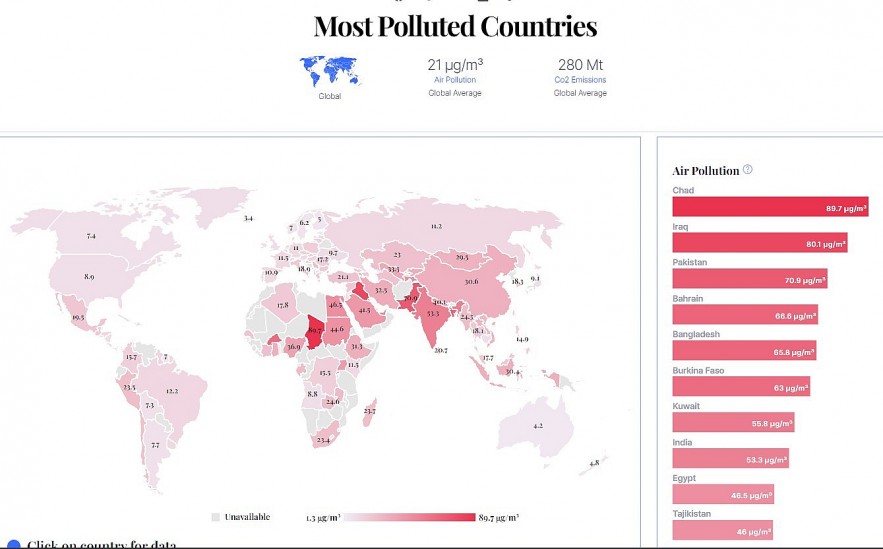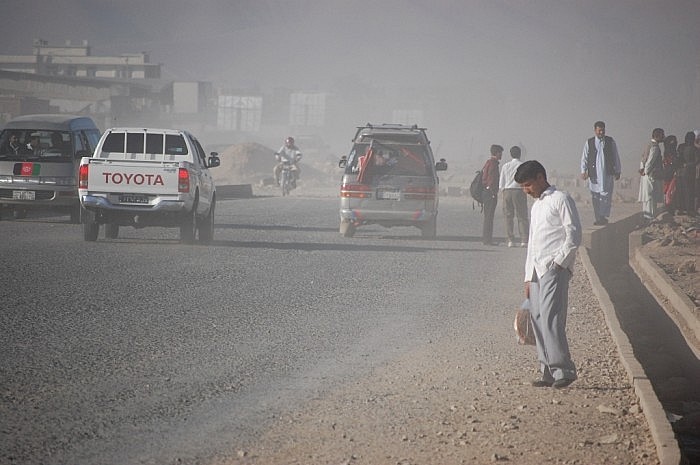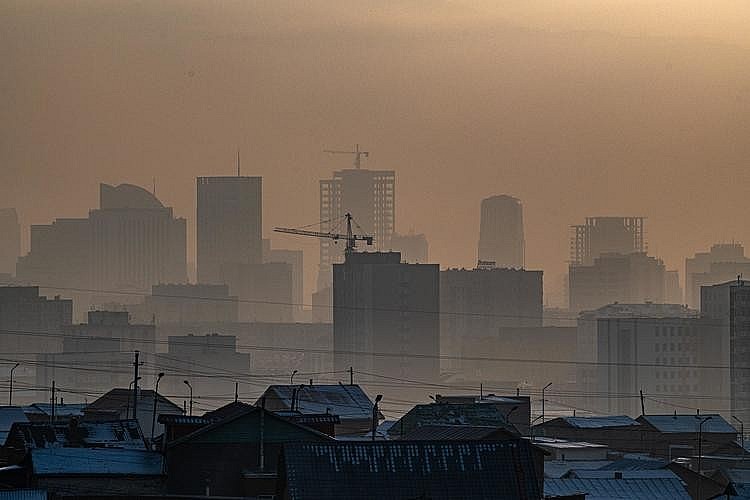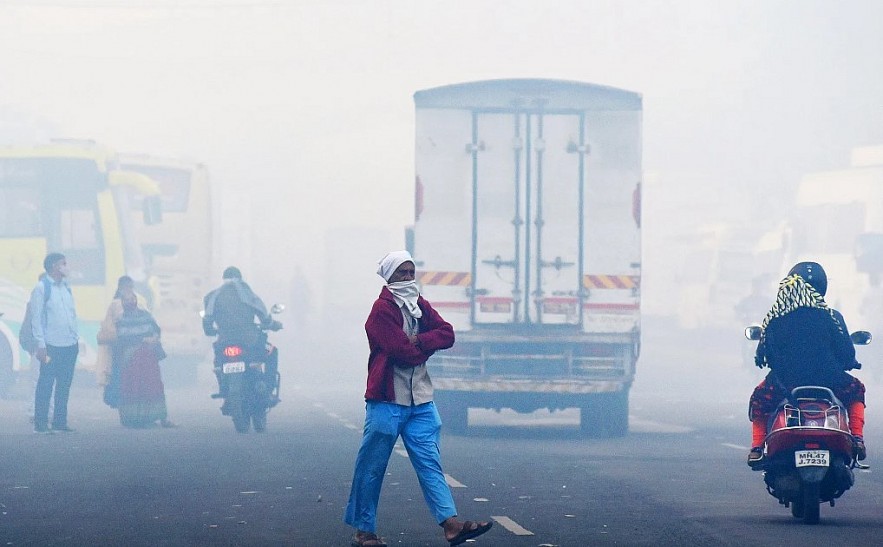Top 10 Countries with the Most Pollution in the World (Update)
 |
| Most Polluted Countries in the World Today |
| Table of Contents |
Air Pollution In the World
The air is full of numerous contaminants, including dust, smoke, pollen, mold, and others. These tiny, easily inhaled particles are more hazardous than larger ones because they can accumulate in the respiratory system and result in a variety of chronic illnesses that are challenging to treat, if not impossible. In the end, this causes death, as it did in 2012 when air pollution caused the deaths of 3.7 million people.
Pollution is the introduction or existence of contaminants that have the potential to harm the environment.
The health of people, animals, plants, and entire ecosystems can all be significantly and long-lastingly negatively impacted by a variety of pollution types.
These polluted nations are not necessarily poor because there are wealthy nations that also experience air pollution. The best indicator for determining how air pollution affects human health is PM2.5, which is measured in (ug/m3) micrograms per cubic meter of air.
According to Pure Earth, toxic pollution is one of the major global risk factors for non-communicable diseases. Non-communicable diseases are responsible for 72% of fatalities, and toxic pollution is responsible for 16% of them. Toxic pollution is to blame for 22% of deaths from cardiovascular disease, 25% of deaths from stroke, 40% of deaths from lung cancer, and 53% of deaths from chronic obstructive pulmonary disease.
The World Health Organization (WHO) reports that air pollution causes 7 million avoidable deaths annually. 91–99% of the world's population lives in areas where the air quality is below what the WHO considers to be healthy.
By examining the concentration of PM2.5 particles, the World Health Organization identified the planet's most polluted area. Fine particulate matter 2.5 (PM2.5) is the name given to airborne microscopic particles or droplets with a diameter of 2.5 microns (g) or less.
In high concentrations, the air pollutant PM2.5 can be harmful to human health. A PM2.5 Health Advisory is issued by cities like New York when the air quality is deemed unsafe for certain populations. Wildfires have also led to an increase in PM2.5 warnings in many other regions, including parts of Europe, Australia, Africa, and the western United States.
The World Health Organization (WHO) has set a target for air pollution of 0–10 g/m3. According to IQ Air, measurements above 35.5 are unsafe for sensitive groups, between 55.5 and 150.4 are unsafe for everyone, and anything higher is either very unsafe (measurements between 150.5 and 250.4) or dangerous (measurements at or above 250.5). In 109 nations worldwide, IQ Air measures air pollution.
Top 10 Countries with the Worst Air Pollution - PM2.5 exposure (µg/m³)
Bangladesh - 77.10
Pakistan - 59.00
India - 51.90
Mongolia - 46.60
Afghanistan - 46.50
Oman - 44.40
Qatar - 44.30
Kyrgyzstan - 43.50
Indonesia - 40.70
Bonsia & Hezegovina - 40.60
Although there are other resources that offer information on air pollution, the IQ Air list is a respectable one. Using data from the Institute for Health Metrics and Evaluation in Seattle, Washington, the Health Effects Institute created its own list ranking the levels of air pollution in 196 countries through the State of Global Air report.
Top 10 Countries with the Worst Air Pollution - PM2.5 exposure (µg/m³)
India - 83.2
Nepal - 83.1
Niger - 80.1
Qatar - 76
Nigeria - 70.4
Egypt - 67.9
Mauritania - 66.8
Cameroon - 64.5
Bangladesh - 63.4
Pakistan - 62.6
The significant discrepancies between the two lists are most likely the result of different recording systems and the fact that the IHME data includes 196 countries as opposed to IQ Air's 109 countries. However, many of the same countries keep appearing, and the rankings are frequently determined by inconsequential margins.
The Air Quality Index (AQI), which is roughly 50 g/m3 more lenient than the IQ Air scale, is the measurement method used by the United States Environmental Protection Agency. Values between 0 and 100 are generally regarded as satisfactory. The range between 101 and 200 is considered unhealthy for some at-risk groups, the range between 201-300 is unhealthy for everyone, and the range above 300 is considered dangerous for everyone.
The countries with the cleanest air, water, and policies are those with high air quality and effective environmental protection measures, according to the Environmental Performance Index (EPI). These countries include Switzerland, France, and Denmark.
Top 10 Most Polluted Countries in the World 2023/2024
1. Pakistan – 101 ug/m3
Pakistan has the worst outdoor air quality and the highest level of air pollution.
Pakistan is the most polluted country in the world, with an average PM2.5 pollution level of 101 ug/m3. With a total population of 196.17 million, Pakistan is one of the most populous nations in the world, and its GDP (PPP) per capita is just $4,699. Pakistan's life expectancy is low, at 63.6 years for men and 65.4 years for women.
The three most polluted cities in Pakistan are Rawalpindi, Peshwar, and Karachi, which are all located in that country. Karachi is ranked as the fifth most polluted city in the world. Over 80,000 hospital admissions in Pakistan each year are caused by the country's polluted outdoor air, with conditions ranging from chronic bronchitis to mild respiratory issues.
For the majority of 2019, Punjab's AQI levels were consistently between the "near unhealthy" and "very unhealthy" ratings, and they even rose as high as 484.
In Pakistan, pollution levels are rising as a result of an increase in the number of vehicles on the road, extensive tree loss, smoke from steel mills and brick kilns, and garbage burning. Pakistan's climate change minister attributed the country's smog to India, but the people of Pakistan accuse their government of not doing enough to monitor or address the problem.
2. Qatar – 92 ug/m3
For a variety of reasons, it is hard to believe that this nation is ranked here. As the richest nation in the world, it is well known for adding to the global air pollution crisis rather than resolving it. As a result, it is listed here as one of the nations with the dirtiest air in the world. Qatar is the second most polluted country in the world, with an average PM2.5 pollution level of 92 ug/m3. Having a population of only 2.15 million, Qatar is not one of the most populous nations in the world, but the country's GDP (PPP) per capita, which stands at $96,903, is the highest in the entire world, enabling those who live there to enjoy the most opulent lifestyle possible.
Qatar has a relatively high life expectancy, with a 77.95 for females and a 78.54 for males. The two most polluted cities in Qatar are the capital Doha, which is ranked as the 12th most polluted city in the world, and Al Wakrah, which is ranked as the 25th most polluted city in the world. Construction and the frequently busy air traffic in Qatar are the main causes of the worsening air quality there.
3. Afghanistan – 84 ug/m3
 |
| Afghanistan - Most Polluted Countries in the World |
With an average PM2.5 pollution level of 84ug/m3, it is ranked as the third most polluted nation in the world. There are 31.2 million people living there in total, and its GDP (PPP) per capita is very low at just $1,177. Both men and women in the nation can expect to live for close to 60 years on average.
Kabul, the country's capital, is the most polluted city in Afghanistan.
The Afghan government estimates that 3000 people pass away in Kabul every year as a result of air pollution. The use of diesel generators and the burning of tires and plastic bags as fuel are to blame for the rise in air pollution.
According to statistics, the war in Afghanistan was less dangerous in 2017 than air pollution. About 26,000 people died that year from illnesses linked to air pollution, while 3,483 people died from armed conflict.
Due to insufficient city infrastructure, irregular groundwater use, and low rainfall in Afghanistan, about 80% of the country's drinking water is also tainted. Food poisoning frequently results from a lack of clean drinking water.
4. Bangladesh – 79 ug/m3
With 79 ug/m3 of average PM2.5 pollution, Bangladesh is the fourth most polluted nation in the world. Bangladesh has a high total population of 156.59 million people and a low GDP (PPP) per capita of $3,167, which has a significant negative impact on the air and contributes to air pollution. For both men and women, the average life expectancy in Bangladesh is thought to be 70 years.
The three cities in Bangladesh that are listed among the 25 worst cities for air quality are Narayonganj, Gazipur, and Dhaka. Narayonganj is the most polluted city in Bangladesh.
Groundwater contamination, noise pollution, solid waste, and air and water pollution are the main environmental pollutants in the nation.
One of the most polluted cities in the world is Dhaka City. Bangladesh's brickmaking industry, which employs a million people and produces 23 billion bricks annually, is the country's main source of air pollution. Brickmaking kilns burn wood or coal, which produces a lot of smoke and dust. The brickmaking industry is expected to continue to expand as a result of the rising demand for bricks, which will increase air pollution.
5. Iran – 76 ug/m3
 |
| Air Pollution in Iran’s Southwestern City |
With an average PM2.5 pollution level of 76 ug/m3, it is the fifth most polluted country in the world. The country has a high population of 77.17 million people, and its GDP (PPP) per capita of $12,478 is also high.
Iranians live an average of 74 years, and the high levels of hazardous airborne particles like carbon monoxide, sulfur dioxide, asbestos, and nitrogen oxide that are inhaled by Iranians are the primary cause of the country's rising air pollution. Khoramabad, which is ranked as the 8th country in the world for having the worst air quality, is the most polluted city in Iran.
6. Egypt – 74 ug/m3
Due to its average PM2.5 pollution level of 74 ug/m3, Egypt is ranked as the sixth most polluted nation in the world. With an estimated 87.4 million citizens, Egypt is also one of the most populous nations in the world. However, with a GDP (PPP) per capita of only $6,714, the country is far from wealthy.
Egypt has a slightly above-average life expectancy rate of 71.30 years for men and 75.20 years for women.
The Delta region contains Egypt's most polluted cities, and Cairo, the nation's capital, is also one of the most polluted cities in the world. The emissions from vehicles, factories, and the burning of coal and wood for heating are the main causes of air pollution in Egypt.
7. Mongolia – 64 ug/m3
 |
| Pollution in Mongolia |
With an average PM2.5 pollution level of 64 ug/m3, it is ranked as the seventh most polluted country in the world. The country's estimated total population is 2.96 million, and the GDP (PPP) per capita is only $5,371, which is low.
Only 68.5 years is the average life expectancy in the nation, which may indicate the impact of pollution. Darkham is the most polluted city in the nation, and pollution is caused by burning coal to heat homes and combat the bitterly cold climate.
Burning coal and other biomass in stoves, such as wood or crop waste, is the main cause of pollution in Mongolia. Children who live in the capital city have a 40% lower lung function than those who live in rural areas, and respiratory infections have increased 270% over the past ten years in Ulan Bator, the capital of Mongolia.
Air pollution has a negative effect on between 70 and 90 percent of expectant mothers receiving care at a family health center in Mongolia. Pneumonia and other respiratory illnesses are being identified in newborn babies as young as two days old.
8. United Arab Emirates – 61ug/m3
Given that its average PM2.5 pollution is 61 ug/m3, it is well known for being among the richest nations in the world and is also highly ranked as the eighth most polluted nation. The population of the United Arab Emirates is estimated to be 9.2 million people, and its GDP (PPP) per capita is high at $30,984.
The country's 76.7-year life expectancy is higher than that of other Arab nations. Al Gharbia is regarded as the most polluted city in the nation, and in an effort to address the issue of air pollution in the nation, Dubai introduced an annual car-free day in 2010.
9. India – 59 ug/m3
 |
| Pollution in India |
It ranks first globally in terms of air pollution levels and fourth in terms of CO2 emissions. India has 59 ug/m3 of PM2.5 pollution on average. The nation is home to about 1.2 billion people, making it the second-most populous nation in the world, and its GDP (PPP) per capita is only $5,777.
The average life expectancy in India is 67.3 for men and 69.6 for women. Delhi is the most polluted city in the world, followed by Patna in second place, Gwalior in third, Raipur in fourth, Ahmedabad in ninth, and Lucknow in tenth place. There are six cities in India that are among the most polluted cities in the world. Vehicle emissions, industrial emissions, construction sites, and India's large population all contribute to air pollution.
Twenty-one of the world's thirty most polluted cities are found in India. Kanpur (2023) is the most polluted city in both India and the entire world, and the medical college there sees 600 patients with respiratory illnesses every month. The sources of India's unhealthy pollution levels include cars, the burning of coal and wood, dust storms, and forest fires.
The capital region of India, Delhi, is infamous for having some of the worst air in the country. This air causes traffic accidents, flight cancellations, school closings, and even turns the Taj Mahal's white marble walls yellow and green.
India's rural areas are particularly affected by pollution because residents still burn crop stubble and rely on dung and wood for heating and cooking.
10. Bahrain – 57 ug/m3
As the tenth-least polluted nation in the world with an average PM2.5 pollution level of 57 ug/m3, it is regarded as the cleanest nation on our list.
With a population of only 1.3 million, Bahrain is not one of the most populous nations in the world. Despite having a high GDP (PPP) per capita of $28,559, which places Bahrain as the 12th most populous nation in the world by GDP, the country experiences severe air pollution problems. Bahrain has a life expectancy of 73 for men and 76 for women.
Smoke, dust, industrial CO2 emissions, and the production of energy are the main factors contributing to Bahrain's air pollution.
In Conclusion
More nations are turning to green alternatives as the effects of pollution have become more obvious in an effort to stop further harm to the planet. The use of renewable energy sources like solar and wind, eco-friendly building materials, and non-toxic goods is rising. Although there are green initiatives all over the world, some nations still have a long way to go.
 Top 10 Countries Attract The Most Tourists of All Time Top 10 Countries Attract The Most Tourists of All Time There are many countries in the world, many natural and man-made beautiful scenes, and many famous tourist attractions. Each different tourist destination will have its ... |
 Top 10 Countries with the Most Delicious and Unique Drinks Top 10 Countries with the Most Delicious and Unique Drinks The clinking of glasses is a great way to meet new people, enjoy time with friends or family, and celebrate the little things in life. |
 Top 10 Countries Have the Highest Job Opportunities to Start A Career in 2023/2024 Top 10 Countries Have the Highest Job Opportunities to Start A Career in 2023/2024 If you are looking for a new job or want to relocate to a new country in 2023/2024, consider one of these ten countries with ... |
 Top 10 Countries Get The Most Military Aid From USA Top 10 Countries Get The Most Military Aid From USA Along with economic assistance, military aid is one of the two primary categories of foreign aid spending. Here are 10 countries that received the most ... |























